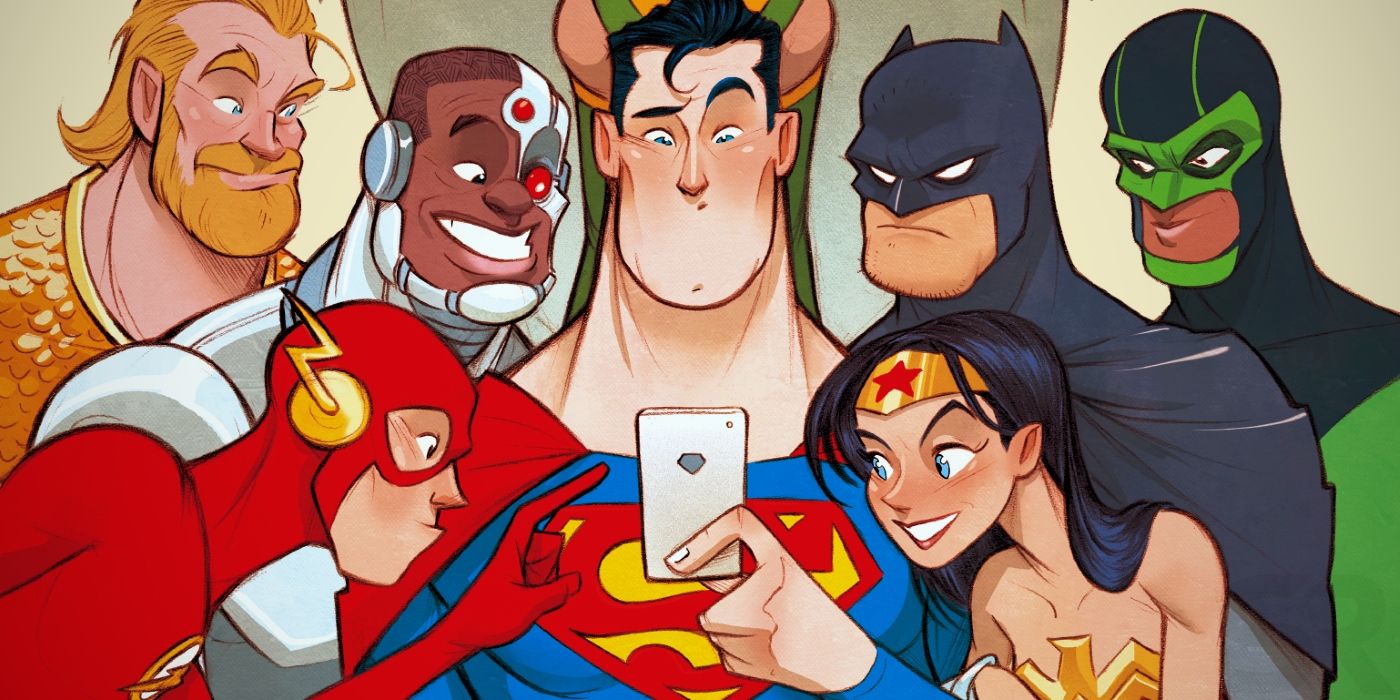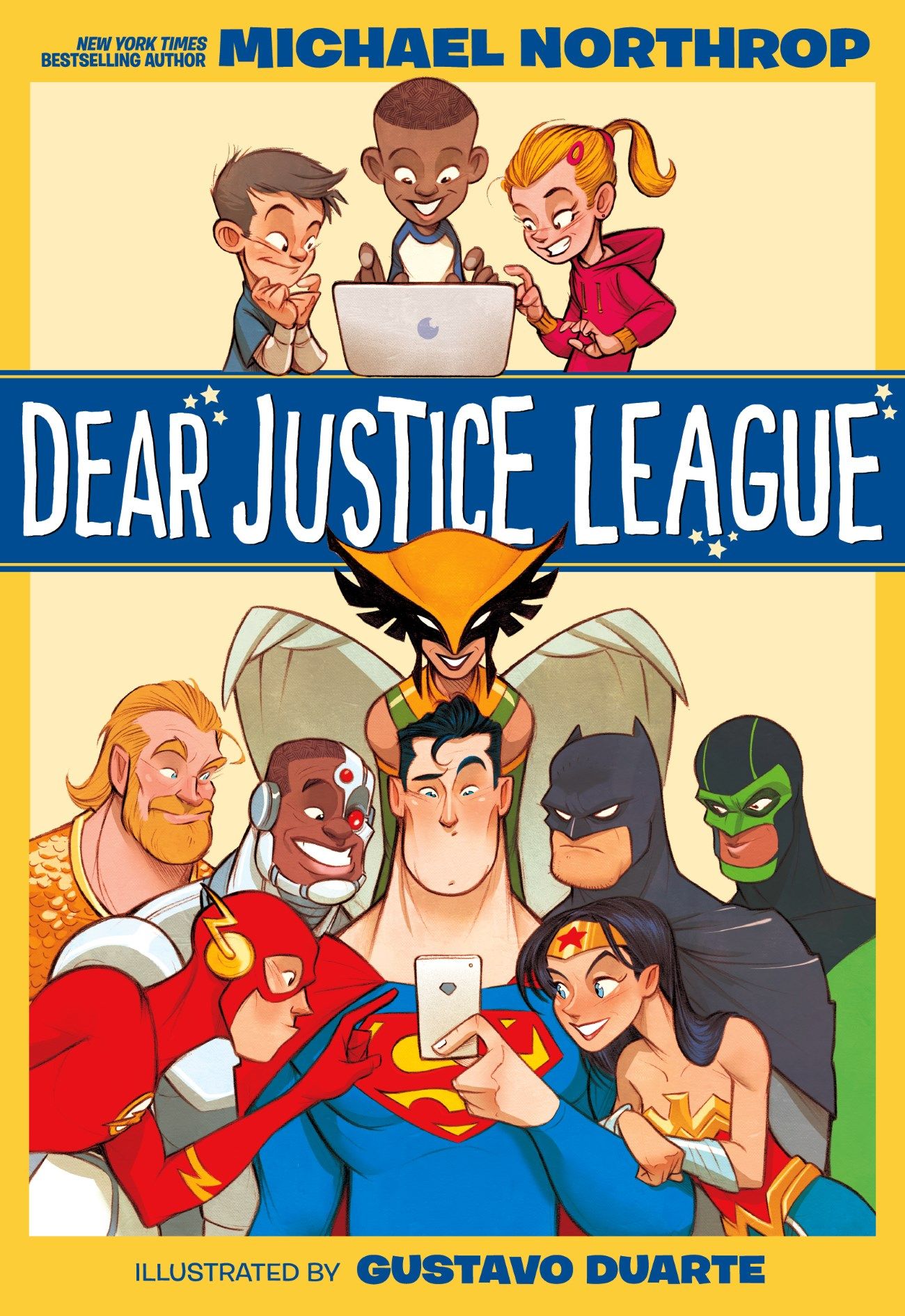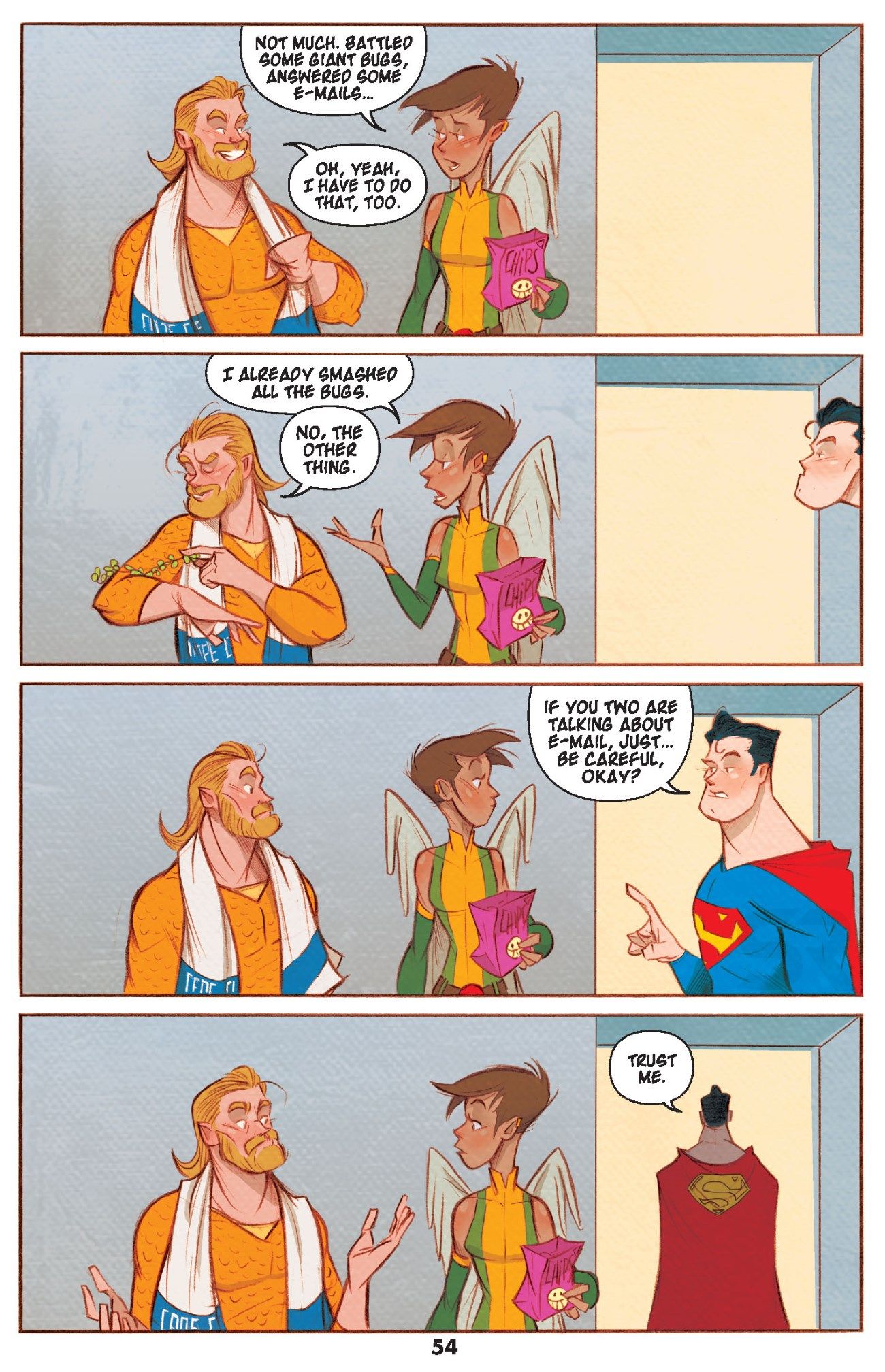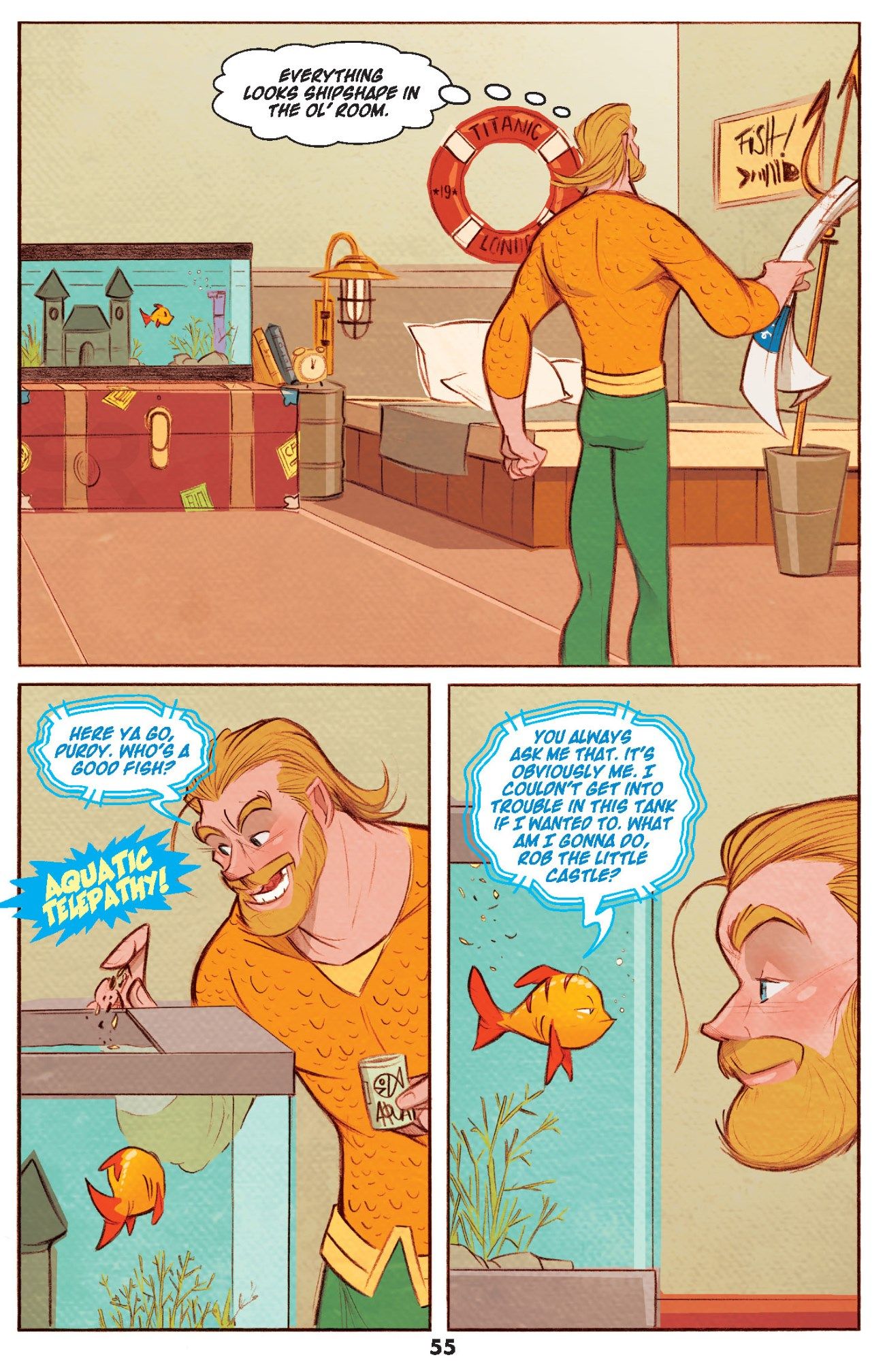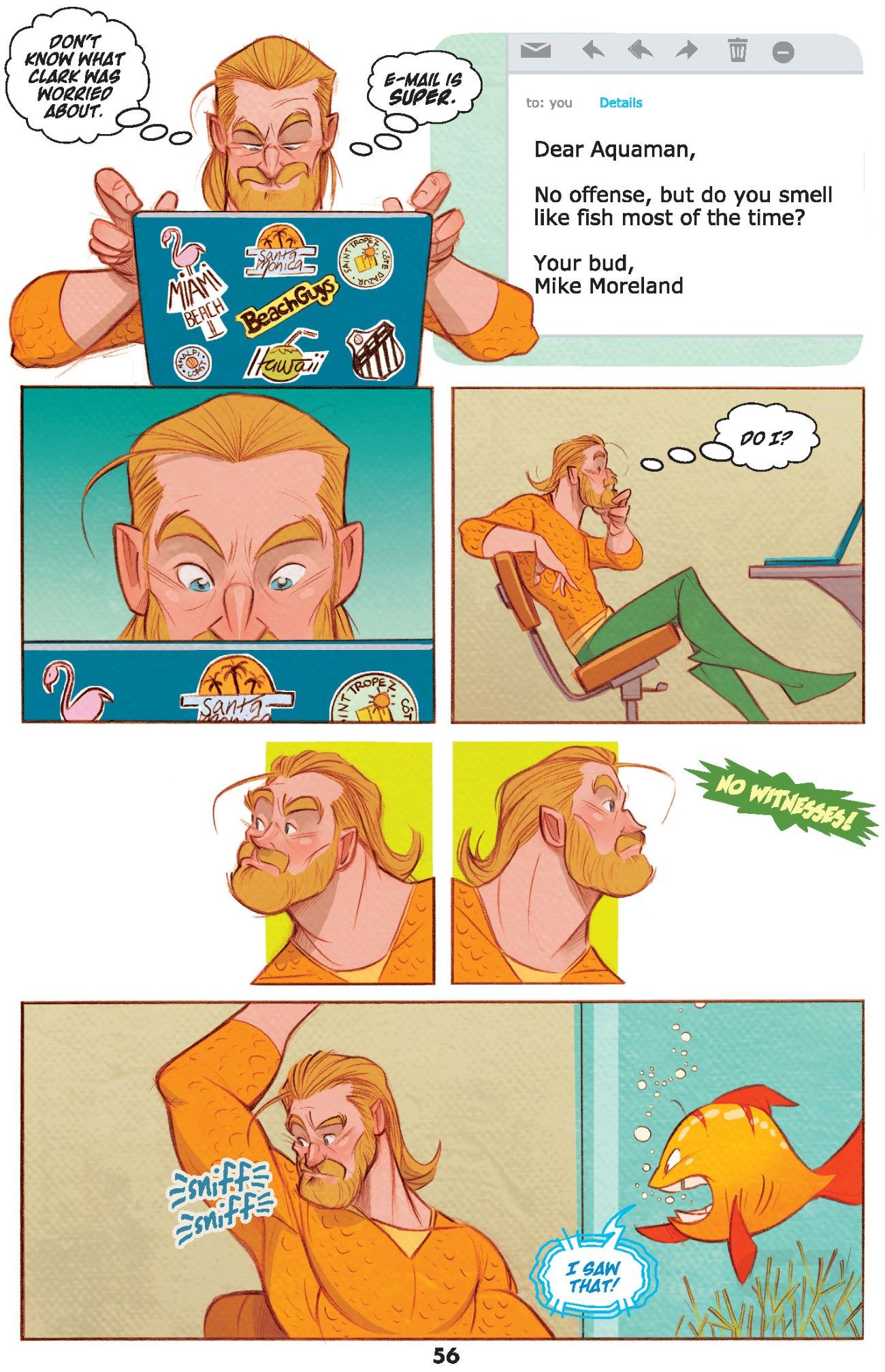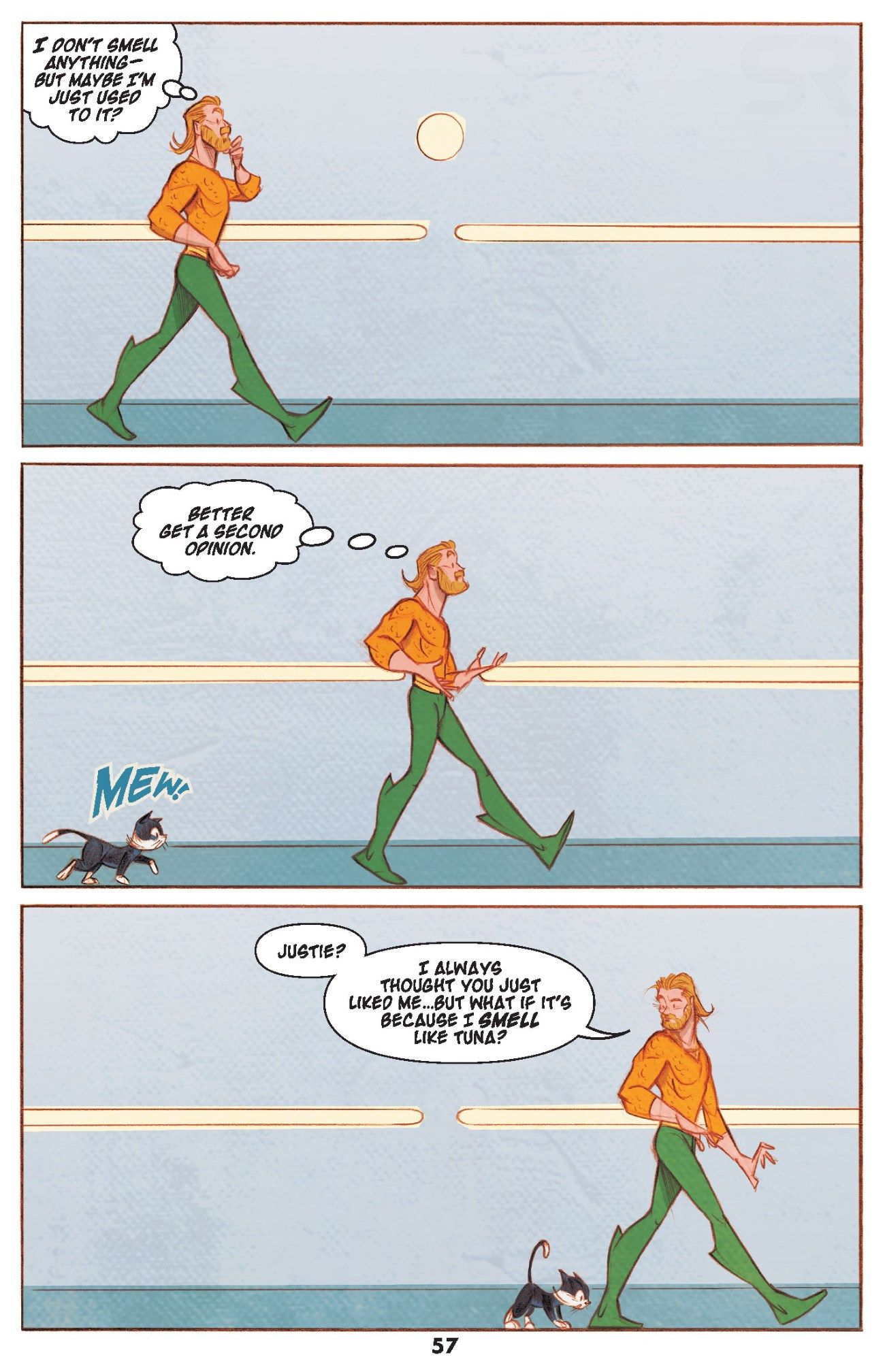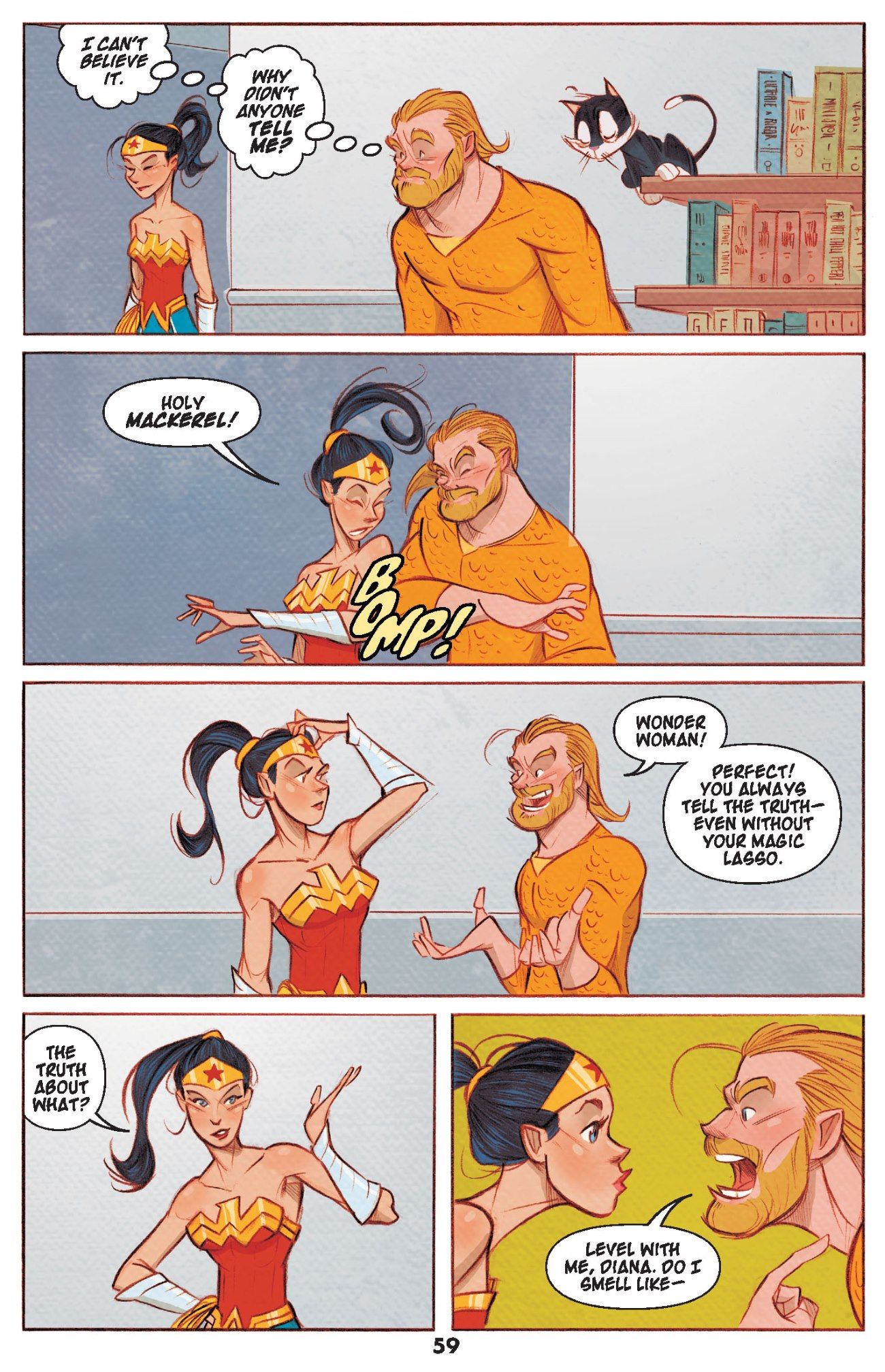Lifelong fans of DC Comics may be able to name every kind of kryptonite Superman has ever faced, and list every supervillain, too. But with Dear Justice League, DC's newest middle-grade graphic novel, it's the team's youngest fans who ask the questions adults never think to. Does Superman ever make mistakes? And does Aquaman smell like fish?
Yes, the new graphic novel from New York Times bestselling author Michael Northrop and artist Gustavo Duarte is changing the formula by viewing DC's greatest heroes through the eyes of their biggest fans. The middle-grade novel faces Superman, Batman, Wonder Woman, and the rest of the Justice League with questions both big and small--along with answers ranging from hilarious to humbling. Dear Justice League seems like the a perfect welcome for young comic fans, but based on our time with the book and our interview with Northrop, it won't just be younger readers who get caught up in these comic book quandaries when it arrives on August 6th, 2019.
I'll start by just asking what your personal connection was with DC's heroes, and the Justice League, when beginning this project?
Yeah, it started with Justice League. I grew up reading comic books, but the DC characters especially I encountered through--there's so many other ways with Super Friends on Saturday mornings, Richard Donner's Superman movie which I loved so much, and Batman with Adam West. It's interesting because I read Marvel and DC. And with Marvel, especially at the time, it was just the comics books. But with DC it was both, there were comic books, but they were such big, iconic figures. I was thinking about this and it occurred to me that I've known these characters in some way or another for longer than I've known anyone continuously other than my immediate family. You know? I've known them since I was 4 or 5, and listening to them talk.
It was one of those things, I was getting ready to write the first section with Superman, and it's really kind of daunting to think about writing dialogue for Superman. But then on the other hand, we're all so qualified to do this. We've been listening to him talk our entire live. When I sat back and thought, 'what would he say in this situation?' It just seemed so clear. Because we've known these characters for so long.
You've written several books for younger readers, this is your first graphic novel and your first step into writing these superheroes. How did you end up signing on? Was there any hesitance tackling a new medium?
[Laughs] Well I'll tell you, there was no hesitation to sign up. I love comic books, and I was reading comic books before I was reading books for myself. I got a late start as a reader, I'm dyslexic and I repeated second grade, and spent some time in special ed. Which was a little traumatic for me honestly, you know, a little embarrassing. Comic books though--because it's visual storytelling, and it's a more intuitive way to encounter the story--were the first thing I really read on my own for fun. They were also the first thing that I read socially, which was maybe even as big a deal. The first time I could read something as fast as my friends, and talk about the same thing instead of talking about two issues before, I could be literally on the same page with them.
So I felt a real lifelong comfort and familiarity with comics, so when they approached me about it I was very excited to send them my ideas, and sign on. But when I actually had to start writing it, that's when that little moment of, 'Oh wait a second [Laughs]. What check did my mouth just write.' So there was definitely some, trepidation is probably the politest phrase for it. Because the process was very different. With writing I'm still a very slow typist, and I'm often just trying to catch up with what's in my head, just hunched over the keyboard trying to get what is in my head out. But with graphic novels it's really the opposite. It's a lot of staring at the wall and visualizing, you're trying to see what's happening... you might be staring at the wall for ten or fifteen minutes and then type a sentence. It took me a little while to realize that's normal. You're not going to be sitting there hunched over and typing for three straight hours when you're writing a graphic novel... although if anyone is, I don't want to hear from them [Laughs].
There's a much slower, more deliberate process of visualization that goes on before you commit any words to paper. Early on I was a little concerned, I did not realize that was normal. I knew I had signed on for this thing, and I was starting to... you know it's not that long a book, but 126 pages was starting to look pretty long to me. But then I settled in, and it's fun once you realize that's okay. You can take some time, picture it, write a sentence here and there, throw in a few words of dialogue, and you're onto the next panel. That was really fun to me, making that realization.
What has it been like working with Gustavo in particular? It's probably difficult for the average reader to wrap their head around, going from writing your story to almost 'sharing a mind' with your artist.
Completely. Gustavo is, first of all, a genius. We have a very similar conception of these characters. Because he was growing up in Brazil and watching Challenge of the Super Friends, and I was growing up in Connecticut watching Super Friends. And the same thing, he's seeing movies and TV shows that I am a hemisphere away. We had the same lifelong conception of these characters. And a fairly bright conception, maybe bright is not the right word. But comics can be very dark these days, and we have known them so long and encountered them in such a relatively sunny way early on, that we both have very sort of cheery outlooks on these characters.
It's funny though, because he's written some wordless graphic novels. Which really as a writer makes me like, 'what am I even bringing to the table here?' When I started scripting these things the captions were very detailed. If I wanted to have Superman's right leg up and his left leg back, I would put it in there. But as I started getting these pages in from Gustavo, and started interacting with him more, and just seeing how--first of all, how much we were on the same page. But secondly, how much I enjoyed the surprises I got from him, my scripts got a lot less detailed.
A description of Superman that on page 10 might've been a full paragraph long, by the end was like, 'Superman. Period.' You know, 'Superman flying.' Because I trusted him to know what I was getting at, and then I wanted to see what he would do. It was a very collaborative process, but the trust came very fast. We're both pulling in the same direction and it was a nice mix of him drawing the things I was seeing, but then also surprising me in really fun ways.
I do think that comes through in the book, that there's a shared goal you're working towards. You mentioned pitching ideas for this young readers' book, how did you arrive at this structure? It's hard for me to imagine it any other way after the fact, but how did you decide on that?
It was actually something from some earlier experience I had. I was an editor at Sports Illustrated Kids Magazine--reporter, writer, editor, I did a lot of things there. But I interviewed a lot of pro athletes, and when you interview pro athletes... they are not always the most forthcoming people. They can be a little defensive, cliches, and canned answers understandably, they get asked the same questions over and over, and anything they say has potential to blow up on them.
But one of the things we did because it was SI Kids was ask them questions that kids had sent in. And the change you would see in the athletes was really immediate, and really eye-opening, in that they would let those defenses down. They might feel like they had to be guarded in what they said around reporters, but when a question's coming in from some ten year-old in Michigan, you could see them kind of re-frame. Even their body language would change sometimes, and they would answer more openly, more honestly. If I asked them a question about making the All-Star team for the first time, they would probably mumble something about taking it one game at a time, and working hard. But if a kid asked them that, then maybe they're thinking back to when they were that age, and that journey they were on.
It was just something that stuck with me, the way that these larger than life figures could let down their guard when they were communicating with kids. And what person is more larger than life than a superhero, right? Is more guarded, has more secrets. It seemed like something that was completely applicable, and made sense. The idea for this book is that larger than life figures are only larger than life when you're looking form the outside, right? From the inside they're just people trying to do their best, trying to figure it out. Even in picking those questions I wanted to find questions that would get through those defenses and let the heroes open up a little.
Well those questions do really vary a great deal, and I will admit that I realized I didn't know if Aquaman smelled like fish. And reading that wondering, 'how has this thought never occurred to me?' But then on the other hand you have, 'does Superman make mistakes?' That seems like one that these days could ignite a furious debate...
Right.
That balance really does lead to the overall tone of the book.
I've done a lot of school visits, definitely over... I know for my two pressers I did 125 school visits. And it is true, kids will say the darnedest things. When you're up on stage in front of an auditorium full of kids and they raise their hands, you really do not know what is going to come out of their mouths. Sometimes it's very straightforward, sometimes it's very earnest, sometimes it's not even a question. 'I have a dog.' 'That's great... that wasn't really a question.' So I try to keep that in mind, the unpredictability of it. But I also wanted a mix, and we wanted some quick humor chapters, and we wanted some more earnest things. As long as I felt like we were still staying on the same path, still making the same point. That superheroes are people too, basically. And make it sound like kids. Kids are so direct sometimes in that way, and it's something that I appreciate... But when you're standing in front of 400 of them and you get asked a question like, it definitely keeps you on your toes.
People now know the stunned moments of profound thinking on these heroes' faces is reflecting the author as well...
[Laughs]
It does really feel--and I assume this may be kind of obvious since this is a middle-grade book--but it feels like the book a parent would get for their kids first. That's a large responsibility for you, obviously. But you can never get to a kid before they're exposed to Batman, or Superman, or Wonder Woman...
Right.
Do you wear that as a badge of honor? Do you take on that burden proudly? Few people actually get to tell the first paper story about these heroes for probably children of die-hard comic book fans looking to get them hooked.
Totally, yeah. You are not going to find a kid who doesn't know who Superman is, at least on a basic level. But you can definitely find kids who don't know much after that. Okay he wears a cape, he flies, he's Superman... Superman, Hawkgirl, people who have their power right in their name, you know what I mean? Hawkgirl. What is her thing? She's got wings. So that was the fun part: to take kids who probably know the names, probably know the powers, maybe know some of their history. They know Batman, they know Robin, that kind of thing. But to start fleshing them out.
Like you mentioned, it's going to be a lifelong process for so many of these kids, they're going to have a lifelong relationship with these heroes. And it is really exciting to try to get that off to a good start. To try to introduce these heroes in an accessible, but also a fun, goodhearted way. In the way that Gustavo and I were introduced early on to Super Friends and stuff like that. It doesn't prohibit darker interpretations of these heroes later on, but it's a friendly opening. It's not the end-all, this is not the last--I really hope this is the first superhero book, and not the last for any of these readers. It's just an opening. A nice handshake, basically.
Well I think it is testament to the tone that Batman's portion of the book is one thing I will forever carry with me...
[Laughs]
Is there a moment or story that connects for you, as you close the book on this one and head to the next project, that you'll hold closest to your chest?
For me it's Superman. It's such a lifelong dream to get to write Superman. But if you notice, Superman is the first section, and it has the fewest words. It's almost wordless for long stretches, little sound effects and stuff like that. That was just... thinking back to the reader I was at that age, for younger readers, reluctant readers. I just wanted it to be the most welcoming introduction to the book possible. So even a very reluctant reader can read it. There are a few words but then you get right into this physical comedy, which Gustavo does so, so well. It really felt like a full circle moment. First of all growing up reading comic books to getting to write Superman, but also growing up as a very reluctant reader, to get to write a book that invites those readers in as gently as possible. So for me that will always... I have a bunch of print-outs from the original art up on my board here. That section will always be really, really close to my heart.
It's just fun, right? Writing about superheroes in a funny way--nothing wrong with that. I had a blast with it, Gustavo had a blast with it, and I think sometimes that comes through. If you have fun making it I think readers can tell.
Full of feats, follies, and colorful illustrations, Dear Justice League gives readers the inside scoop into everyday heroics, no matter who wears the cape, coming to a local comic book shop or bookstore need you. Head to DC Comics for details, and check out Dear Justice League's trailer below:
Michael Northrop is the New York Times bestselling author of Scholastic's new multi-platform series, TombQuest. His first young adult novel, Gentlemen, earned him a Publishers Weekly Flying Start citation, and his second, Trapped, was an Indie Next List selection. His first middle-grade novel, Plunked, was named one of the best children's books of the year by the New York Public Library and was selected for NPR's Backseat Book Club. He is originally from Salisbury, Connecticut, a small town in the foothills of the Berkshire mountains, where he mastered the arts of BB gun shooting, tree climbing, and field goal kicking with only moderate injuries. After graduating from NYU, he worked at Sports Illustrated Kids magazine for 12 years, the last five of those as baseball editor.
Gustavo Duarte is a Brazilian cartoonist, graphic designer and a comics creator and currently resides in São Paulo. For the last 20 years, Duarte's cartoons and illustrations have been published in some of the most popular publications in Brazil. In 2009, Duarte began publishing his own comics like Monsters!, Có!, Birds and others. In addition to his own works, he has also written and illustrated comics for major publishers including DC (Bizarro) and Marvel (Guardians of the Galaxy and Lockjaw), among others.

